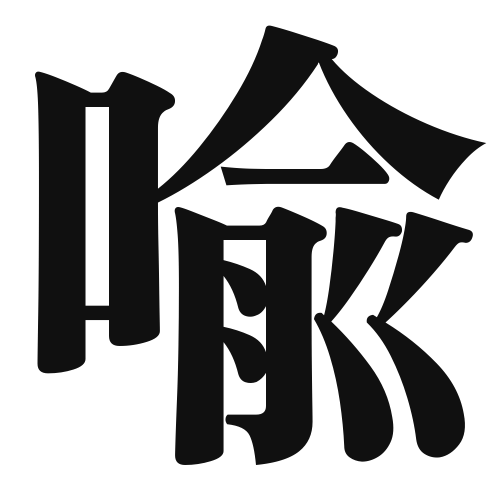1. Overview of Meaning
The kanji “喩” (yuu) means “metaphor” or “analogy.” It refers to a figure of speech that describes something by comparing it to something else, often to clarify or enhance understanding.
2. Formation and Radical
The kanji “喩” is composed of two parts: the left side “口” (kuchi), which means “mouth,” and the right side “余” (yo), which can mean “to spare” or “to remain.” This combination suggests the act of speaking or expressing something through words.
The radical of “喩” is “口,” indicating its connection to speech and communication.
3. Examples of Usage
Common words and phrases that include “喩” are:
- 比喩 (hiyu) – metaphor
- 喩え (tatoe) – example or analogy
Example sentence in daily conversation:
「彼の話は、喩えを使ってとても分かりやすかった。」
(His story was very easy to understand because he used metaphors.)
4. Synonyms and Antonyms
Similar kanji with related meanings include:
- 例 (rei) – example, which refers to a specific instance used for illustration.
- 象徴 (shouchou) – symbol, which conveys a broader representation than a metaphor.
Antonyms include:
- 直喩 (chokuyu) – direct metaphor, which is a straightforward comparison without embellishment.
5. Cultural and Historical Background
The kanji “喩” is significant in Japanese culture, particularly in literature and poetry, where metaphors are often used to convey deeper meanings and emotions.
Common proverbs and idiomatic expressions include:
- 「百聞は一見にしかず」 (Hyakubun wa ikken ni shikazu) – “Seeing is believing,” which emphasizes the importance of direct experience over hearsay, often illustrated through metaphorical language.
